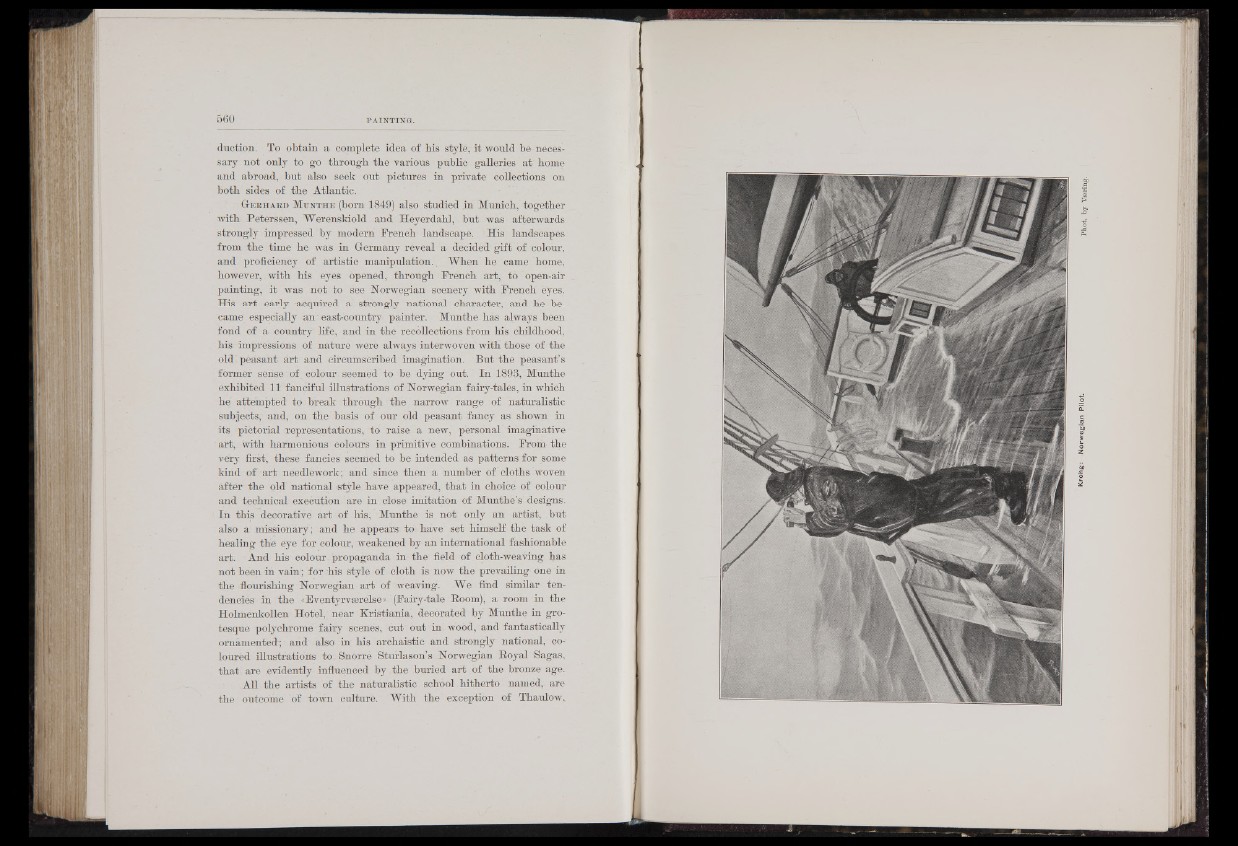
(luction. To obtain a complete idea of bis style, it wonld be necessary
not only to go through the various public galleries at home
and abroad, but also seek out pictures in private collections on
both sides of the Atlantic.
G e b h a b d M u n t h e (born 1849) also studied .in Munich, together
with Peterssen, Werenskiold and Heyerdahl, but was afterwards
strongly impressed by modem French landscape. His landscapes
from the time he was in Germany reveal a decided gift of colour,
and proficiency of artistic manipulation. When he came home,
however, with his eyes opened, through French art, to open-air
painting, it was not to see Norwegian scenery with French eyes.
His art early -acquired a strongly national character, and he became
especially an' east-Gountry painter. Munthe has always been
fond of à country life, and in the recollections from his childhood,
his impressions of nature were always interwoven with those of the
old peasant art and circumscribed imagination. But the peasant’s
former sehse of colour seemed to be dying out. In 1893, Munthe
exhibited 11 fanciful illustrations of Norwegian fairy-tales, in which
he attempted to break through the narrow range of naturalistic
subjects, and, on the basis of our old peasant fancy as shown in
its pictorial representations, to raise a new, personal imaginative
art, with harmonious colours in primitive combinations. From- the
very first, these fancies seemed to be intended as patterns for some
kind of art needlework; and since then a number of cloths woven
after the old national style have appeared, that in choice of colour
and technical execution are in close imitation of Munthe’s designs.
In this decorative art of his, Munthe is not only an artist, but
also a missionary; and he appears to have set himself thé task of
healing the eye for colour, weakened by an international fashionable
art. And his colour , propaganda in the field of cloth-weaving has
not been in vain; for his style of cloth is now the prevailing one in
the flourishing Norwegian art of weaving. We find similar tendencies
in the «Eventyrværelse» ' (Fairy-tale Room), a room in the
Holménkollen Hotel, near Kristiania, decorated by Munthe in grotesque
polychrome fairy scenes, cut out in wood, and fantastically
ornamented-; and also in his archaistic and strongly national, coloured
illustrations to . Snorre Sturlason’s Norwegian Royal Sagas,
that are evidently influenced by the buried art of the bronze age.
All the artists of the naturalistic school hitherto named, are
the outcome of town culture. With the exception of Thaulow,
by Væring.